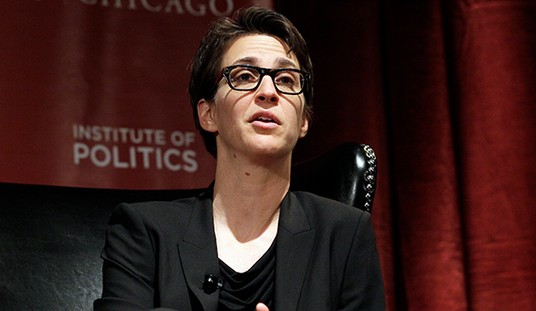If national elections get won or lost on the status of the economy, today’s report on GDP growth from the Bureau of Economic Analysis might be good news for Hillary Clinton — although it’s not likely to change anyone’s mind about their personal conditions. The US economy grew at an annualized rate of 2.9% in the third quarter according to the BEA’s advance estimate, a big step up from Q2’s 1.4% and an even weaker Q1 of 0.8%:
Real gross domestic product increased at an annual rate of 2.9 percent in the third quarter of 2016 (table 1), according to the “advance” estimate released by the Bureau of Economic Analysis. In the second quarter, real GDP increased 1.4 percent.
The Bureau emphasized that the third-quarter advance estimate released today is based on source data that are incomplete or subject to further revision by the source agency (see “Source Data for the Advance Estimate” on page 3). The “second” estimate for the third quarter, based on more complete data, will be released on November 29, 2016.
The increase in real GDP in the third quarter reflected positive contributions from personal consumption expenditures (PCE), exports, private inventory investment, federal government spending, and nonresidential fixed investment that were partly offset by negative contributions from residential fixed investment and state and local government spending. Imports, which are a subtraction in the calculation of GDP, increased (table 2).
The acceleration in real GDP growth in the third quarter reflected an upturn in private inventory investment, an acceleration in exports, a smaller decrease in state and local government spending, and an upturn in federal government spending. These were partly offset by a smaller increase in PCE, and a larger increase in imports.
Interestingly, PCE growth dropped significantly from the previous quarter, falling from 4.3% to 2.1%. Personal spending on non-durable goods actually dropped from Q2 by 1.4%. However, spending on durable goods went up 9.5%, the second straight quarter of above-9% growth, making the last two quarters the best pairing in over three years. Overall, though, PCEs turned in their second-worst quarter in the past two years (2016 Q1’s 1.6% was the lowest).
This quarter’s overall result got a big boost from exports, which ticked up 10%, with exported goods sales rising 14.5% over the previous quarter. It’s worth noting that exports had been in the doldrums for the last six quarters; the most recent double-digit gain in exports took place in 2013 Q4, while four of the last six quarters have been negative. It’s overdue, but it’s not necessarily reliable looking forward either.
Another interesting point is federal spending. Normally we’d see a big boost in Q3 as agencies spend the last of their budget dollars, and perhaps especially so in an election year. Not this time; federal spending went up only 2.5%, lower than the overall GDP growth rate. The final sales of domestic product measure (2.3%) also suggests that the results haven’t been goosed; the small difference between that and overall GDP would be inventory growth, cited by the BEA in its summary and expected at this time of year.
This certainly improves on Q2 and Q1, assuming all of this holds up in the second and third estimates, but it’s not a gamechanger. We are still on pace to fall significantly short of last year’s 2.6% annual GDP growth, which wasn’t much to write home about either. None of this shows any underlying change in the fundamentals of a stagnant economy, nor any reason to think that circumstances have changed enough for most voters to change their minds about what they plan to do on November 8th.
Reuters focused its lead on the expectations game and the comparison to two years of stagnant-or-worse reports:
The U.S. economy grew at its fastest pace in two years in the third quarter as a surge in exports and a rebound in inventory investment offset a slowdown in consumer spending.
Gross domestic product increased at a 2.9 percent annual rate after rising at a 1.4 percent pace in the second quarter, the Commerce Department said on Friday in its first estimate.
That was the strongest growth rate since the third quarter of 2014 and beat economists’ expectations for a 2.5 percent expansion pace. Business investment improved last quarter, though spending on equipment remained weak.
The AP’s Martin Crutsinger leads on the same points, but also offers a good insight into the sudden boom in exports:
GDP growth went into a pronounced slowdown late last year. Exporters were constrained by a rising dollar, which made their products more expensive on overseas markets, and businesses cut back on their inventory rebuilding in the face of weaker sales.
With the dollar stabilizing, export sales rebounded in the summer and businesses picked up the pace of inventory building. Solid growth is also expected this quarter.
Solid is a term of art, of course. Clearly we will end the seventh calendar year of the recovery the same way we have ended the other six — below 3% GDP growth. It’s been two years since we’ve even seen a quarter of growth at that annualized rate. The sluggishness has persisted in all sorts of global economic conditions, which strongly suggests that the problem is right here at home. Whether than changes depends in large part which way voters go in eleven days.








Join the conversation as a VIP Member